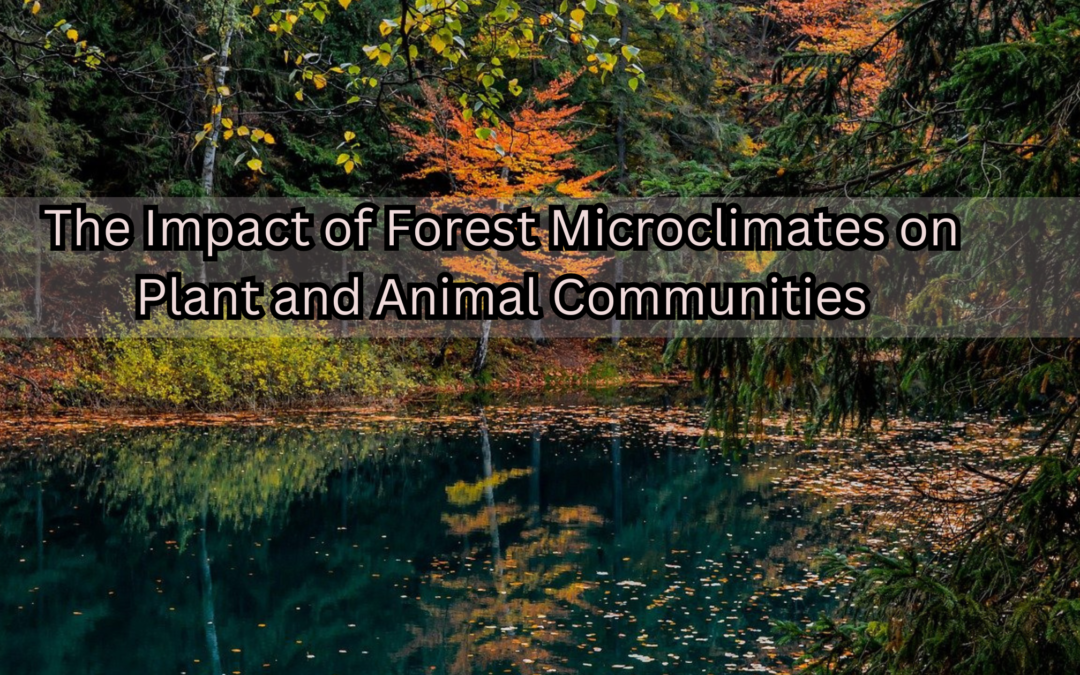Forests are more than just towering trees and leafy canopies. Beneath the surface lies an intricate network of smaller environments, known as forest microclimates, which shape the world of plants and animals. These microclimates, created by variations in light, temperature, humidity, and wind, play a vital role in the distribution and behavior of species. Let’s explore how these microclimates affect forest ecosystems and why they matter.
What Are Forest Microclimates?
Forest microclimates are the localized changes in environmental conditions inside forests, due to the layered structure of the forest, from the canopy to the forest floor, different areas within a forest experience varying levels of light, temperature, moisture, and wind. These small-scale differences create unique conditions for both plants and animals to thrive. Understanding these microclimates is key to managing forest health and biodiversity.
How Forest Microclimates Affect Plant Communities
Plants in forests depend heavily on microclimates. The upper canopy blocks much of the sunlight, while the forest floor receives filtered light. This means certain plants like ferns and mosses, which love shade, grow best in the lower levels while sun-loving plants populate gaps where more light hits the ground.
- Light and Shade: Forest gaps created by fallen trees allow sunlight to reach the ground, encouraging the growth of sun-loving plants. In contrast, the dense canopy creates a cool, shady environment where shade-tolerant species thrive.
- Temperature and Moisture: The forest floor is usually cooler and more humid compared to the canopy. This creates the perfect conditions for decomposers like fungi to break down organic material, enriching the soil and helping other plants grow.
Because of these microclimates, forests can support a wide range of plant species, all adapted to different environmental conditions.

How Forest Microclimates Influence Animal Communities
Animals are just as affected by microclimates as plants. Different species prefer different conditions, and the forest offers a range of microhabitats to meet their needs.
- Amphibians and Reptiles: Species like frogs and salamanders prefer the cool, damp conditions on the forest floor. They rely on humidity to keep their skin moist, making this part of the forest essential for their survival.
- Birds and Insects: Birds and insects like butterflies often thrive in the warmer, sunnier parts of the forest, such as the edges or the canopy. These areas provide the right temperature and access to food.
In addition to temperature and humidity, microclimates affect the availability of food and shelter. The damp forest floor is home to countless insects, providing food for ground-dwelling birds and small mammals. Meanwhile, birds and bats use the layered structure of the forest to find places to nest and roost.
The Role of Forests in Climate Change
As global temperatures rise and precipitation patterns shift due to climate change, forest microclimates are being affected. The balance that supports various plant and animal communities is fragile, and changes in temperature, humidity, and vegetation can disrupt it.
- Impact on Specialized Species: Species that rely on very specific microclimatic conditions may struggle to survive as their habitats change. This could lead to shifts in the makeup of forest communities or even local extinctions.
Preserving these microclimates is essential if we want to maintain the biodiversity and resilience of forests in the face of climate change.
Why Protecting Forest Microclimates Matters
The stability of forest ecosystems depends on the diversity of plant and animal species, which in turn relies on the variety of microclimates within the forest. By understanding and protecting these small-scale environments, we can ensure the long-term health of forests and the species that call them home.
Protect Forest Microclimates for a Sustainable Future
Forest microclimates are crucial to the balance of life in our forests. As we face the challenges of climate change, it’s more important than ever to protect these delicate environments. Whether you’re a forest manager, a conservationist, or simply someone who cares about nature, understanding and preserving forest microclimates is a step toward a more sustainable future.
Learn more about forest microclimates and how you can help by visiting EAT Community.
Related Articles and Resources:
- Forest Ecosystems and Pollination Services: How They Benefit Agriculture and Biodiversity
- Forests
- Rainforest Alliance
- Preserving Forest Biodiversity for a Sustainable Future
- Forests for all Forever
- 3 Facts about Endangered Species that Everyone Should Know
- How Deforestation Impacts Climate Change and Strategies for Reforestation



